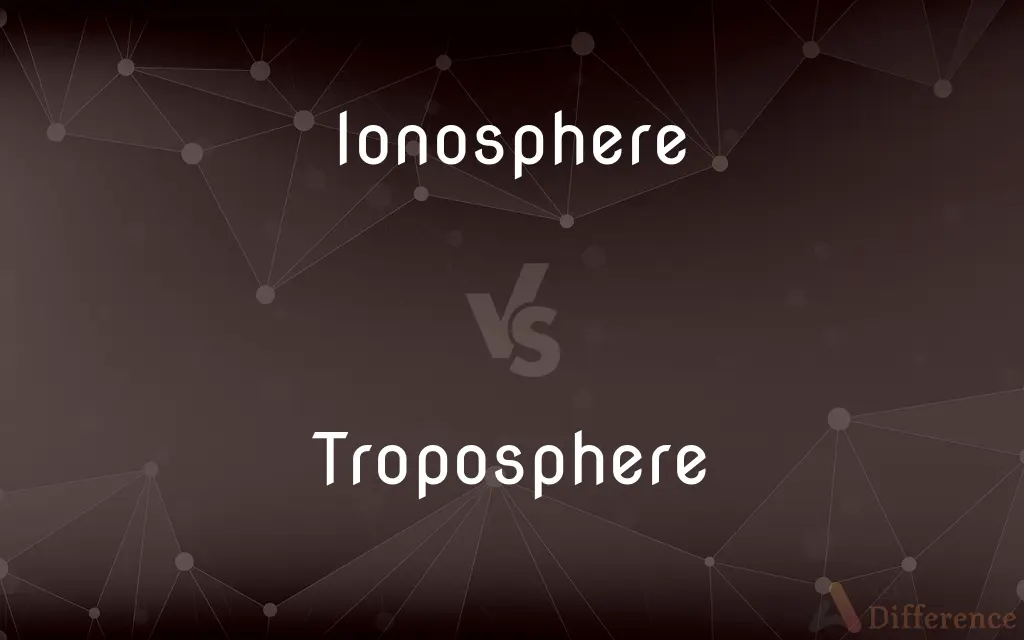Ionosphere vs. Troposphere — What's the Difference?

Difference Between Ionosphere and Troposphere
ADVERTISEMENT
Compare with Definitions
Ionosphere
The ionosphere () is the ionized part of Earth's upper atmosphere, from about 48 km (30 mi) to 965 km (600 mi) altitude, a region that includes the thermosphere and parts of the mesosphere and exosphere. The ionosphere is ionized by solar radiation.
Troposphere
The troposphere is the first layer of the atmosphere of the Earth, and contains 75% of the mass of the planetary atmosphere and 99% of the total mass of water vapour and aerosols, and is where most weather phenomena occur. The average height of the troposphere is 18 km (11 mi; 59,000 ft) in the tropics, 17 km (11 mi; 56,000 ft) in the middle latitudes, and 6 km (3.7 mi; 20,000 ft) in the polar regions in winter; thus, the total average height of the troposphere is 13 km (8.1 mi; 43,000 ft).
Ionosphere
A region of the earth's atmosphere where ionization caused by incoming solar radiation affects the transmission of radio waves. It extends from a height of 70 kilometers (43 miles) to 400 kilometers (250 miles) above the surface.
Troposphere
The lowest region of the atmosphere between the earth's surface and the tropopause, characterized by decreasing temperature with increasing altitude.
Ionosphere
The part of the Earth's atmosphere beginning at an altitude of about 50 kilometers (31 miles) and extending outward 500 kilometers (310 miles) or more.
ADVERTISEMENT
Troposphere
The lower levels of the atmosphere extending from the surface of the Earth or another celestial body up to the tropopause. It is characterized by convective air movements and a large vertical temperature change.
Ionosphere
The similar region of the atmosphere of another planet.
Troposphere
The lowest atmospheric layer; from 4 to 11 miles high (depending on latitude)
Ionosphere
The outer region of the earth's atmosphere, beyond which is the exosphere; it contains a high concentration of free electrons and ions, and extends from about 50 miles to about 250 miles above the earth's surface, but the height shows daily and seasonal variation, and the composition of the particles in the ionosphere is also affected by events such as solar flares.
Ionosphere
The outer region of the Earth's atmosphere; contains a high concentration of free electrons
Share Your Discovery

Previous Comparison
Burst vs. Explode
Next Comparison
Maca vs. Paca














































